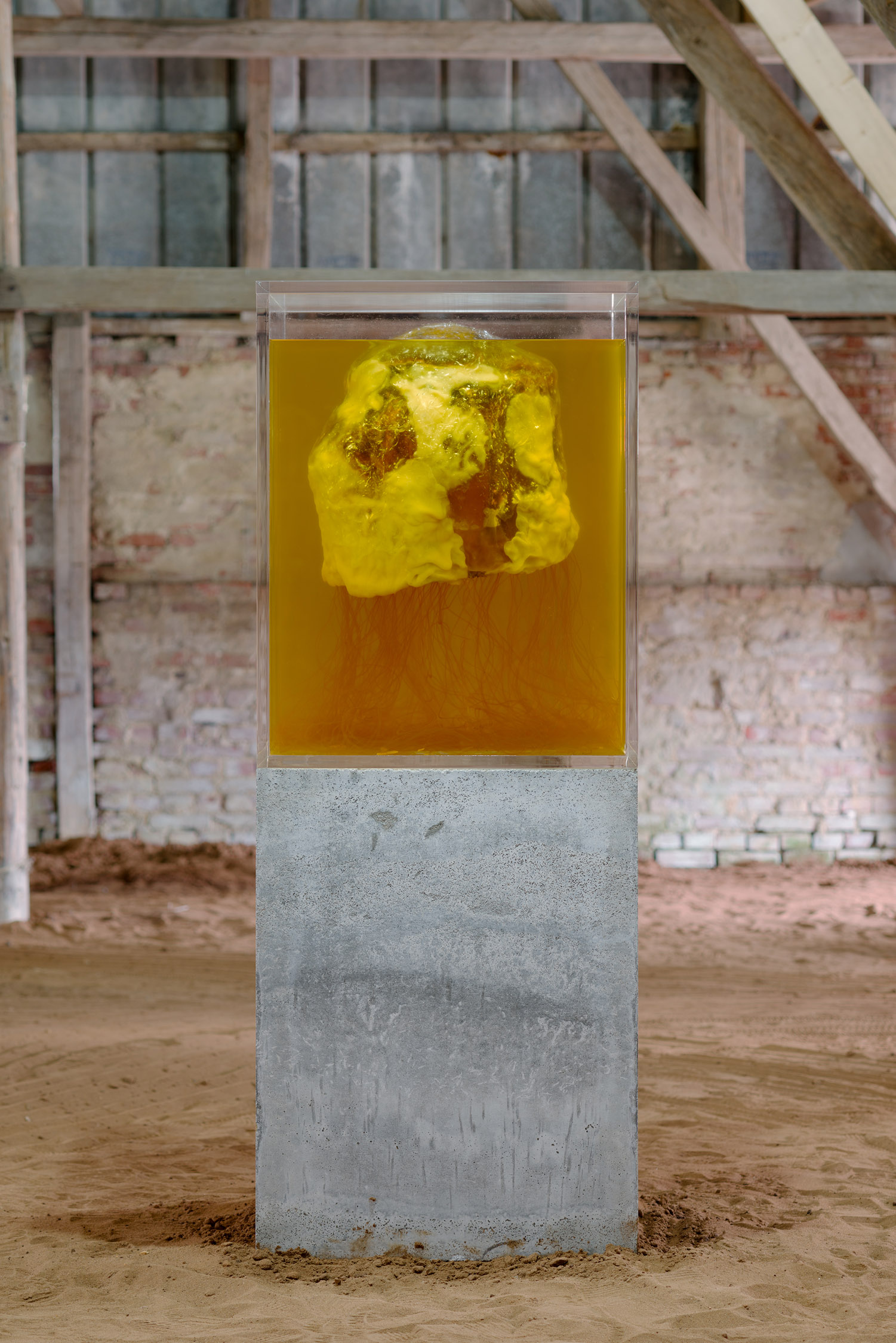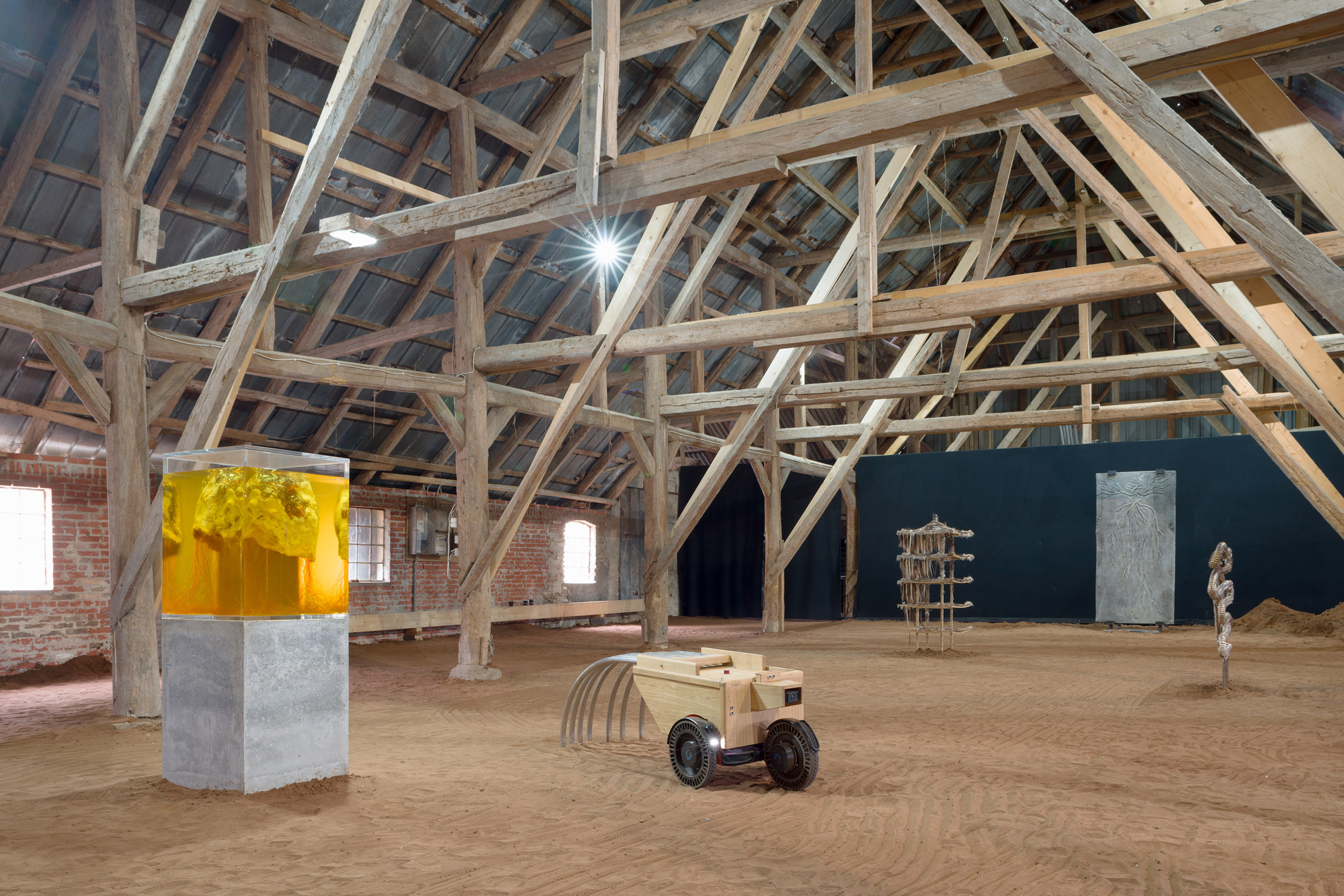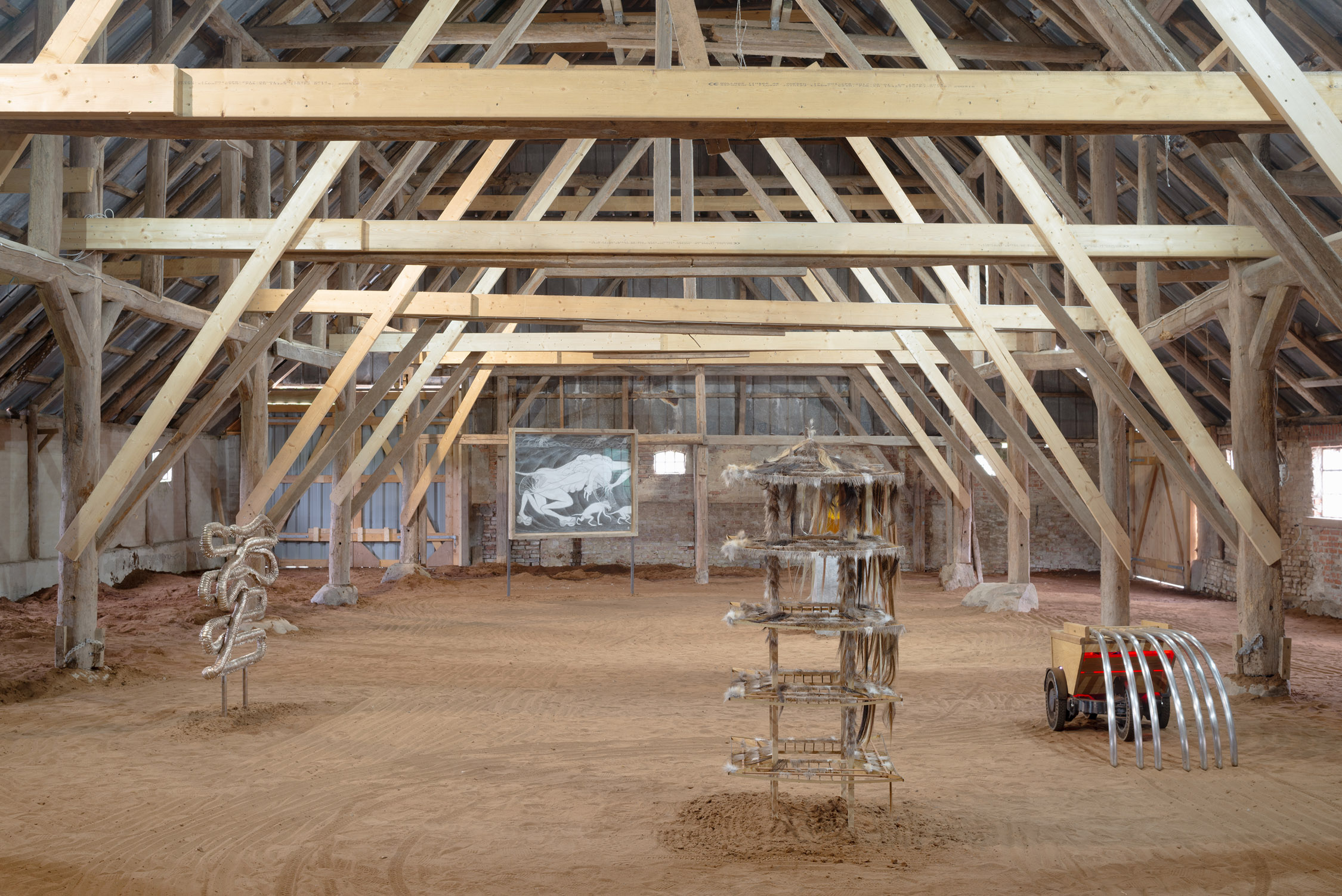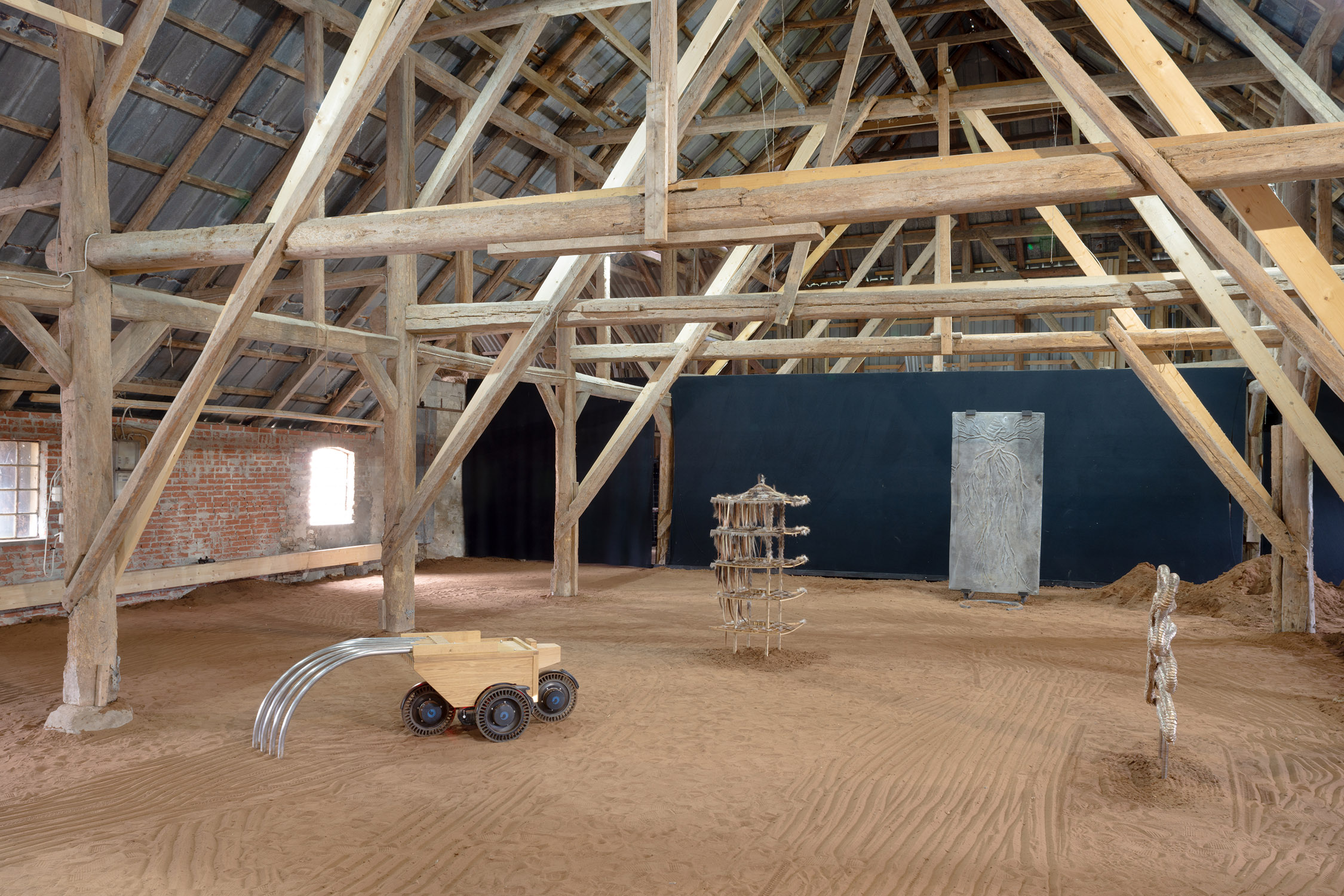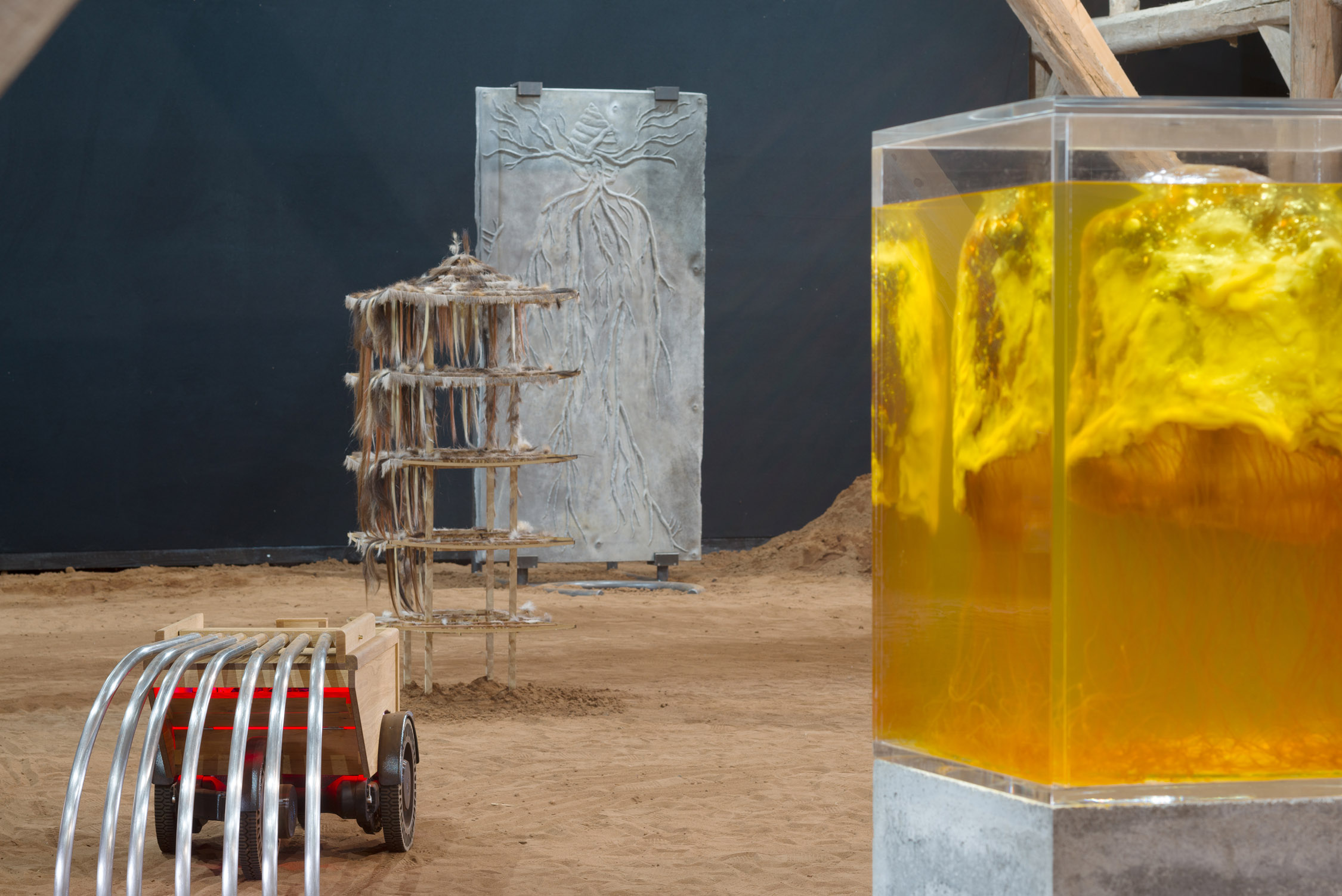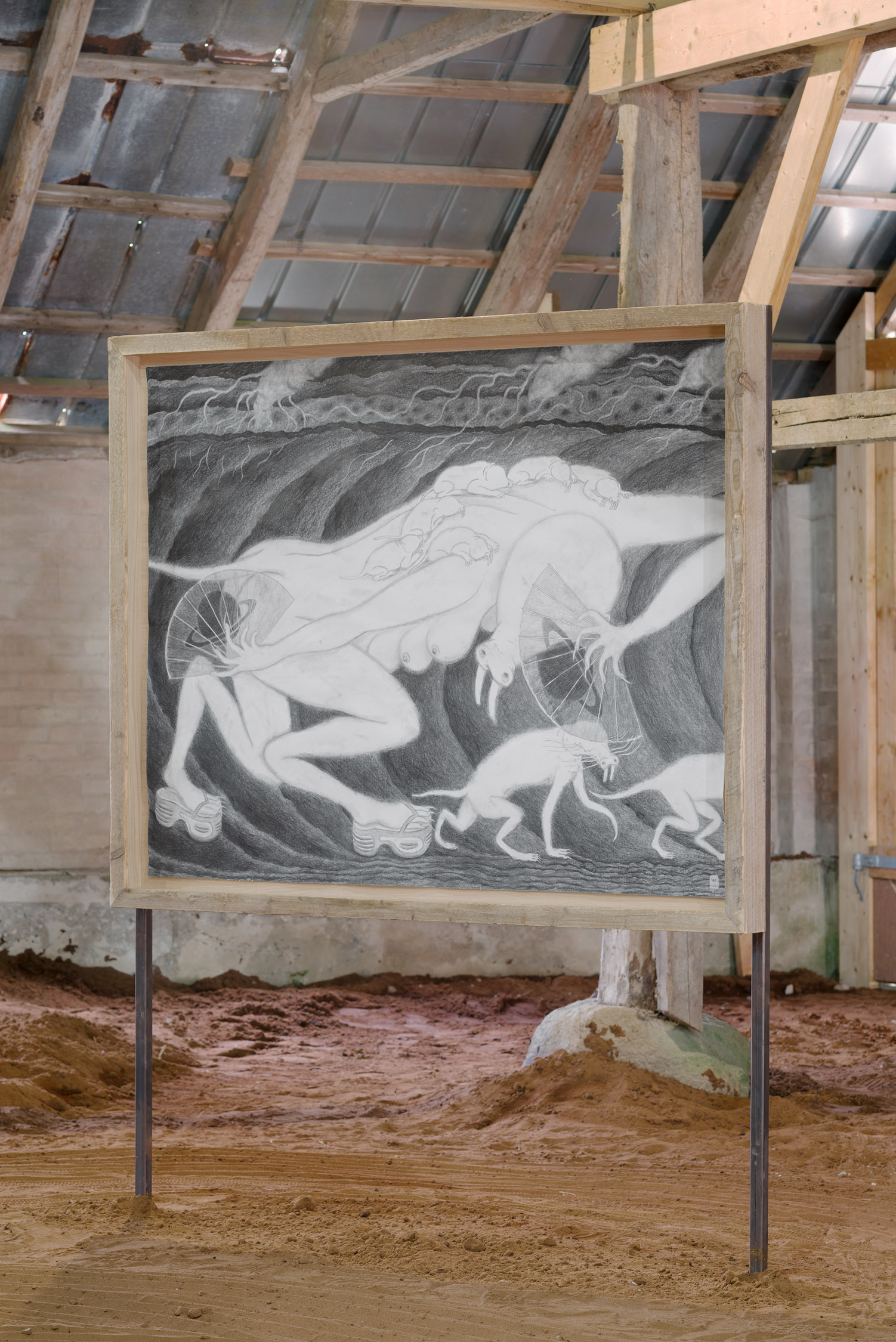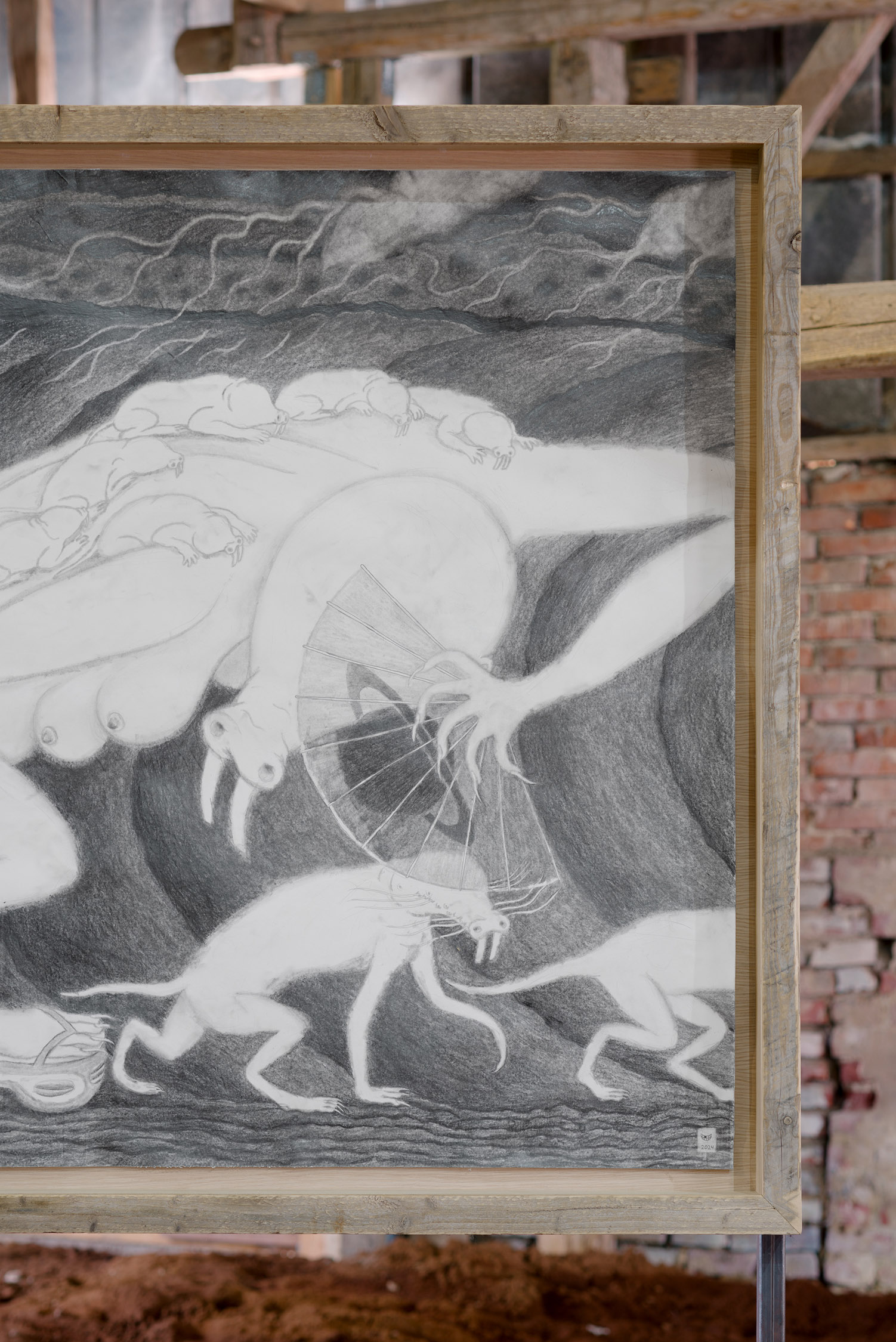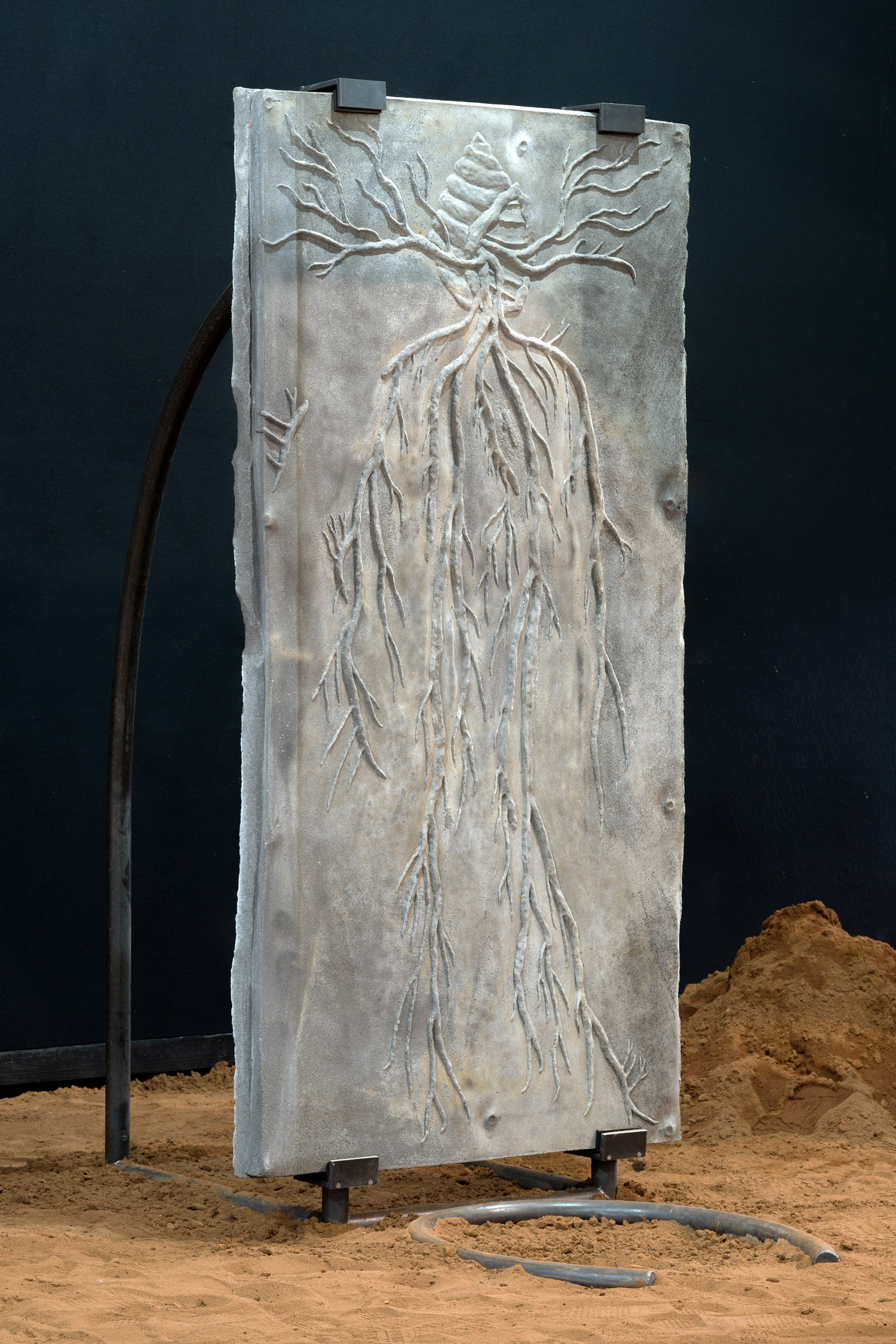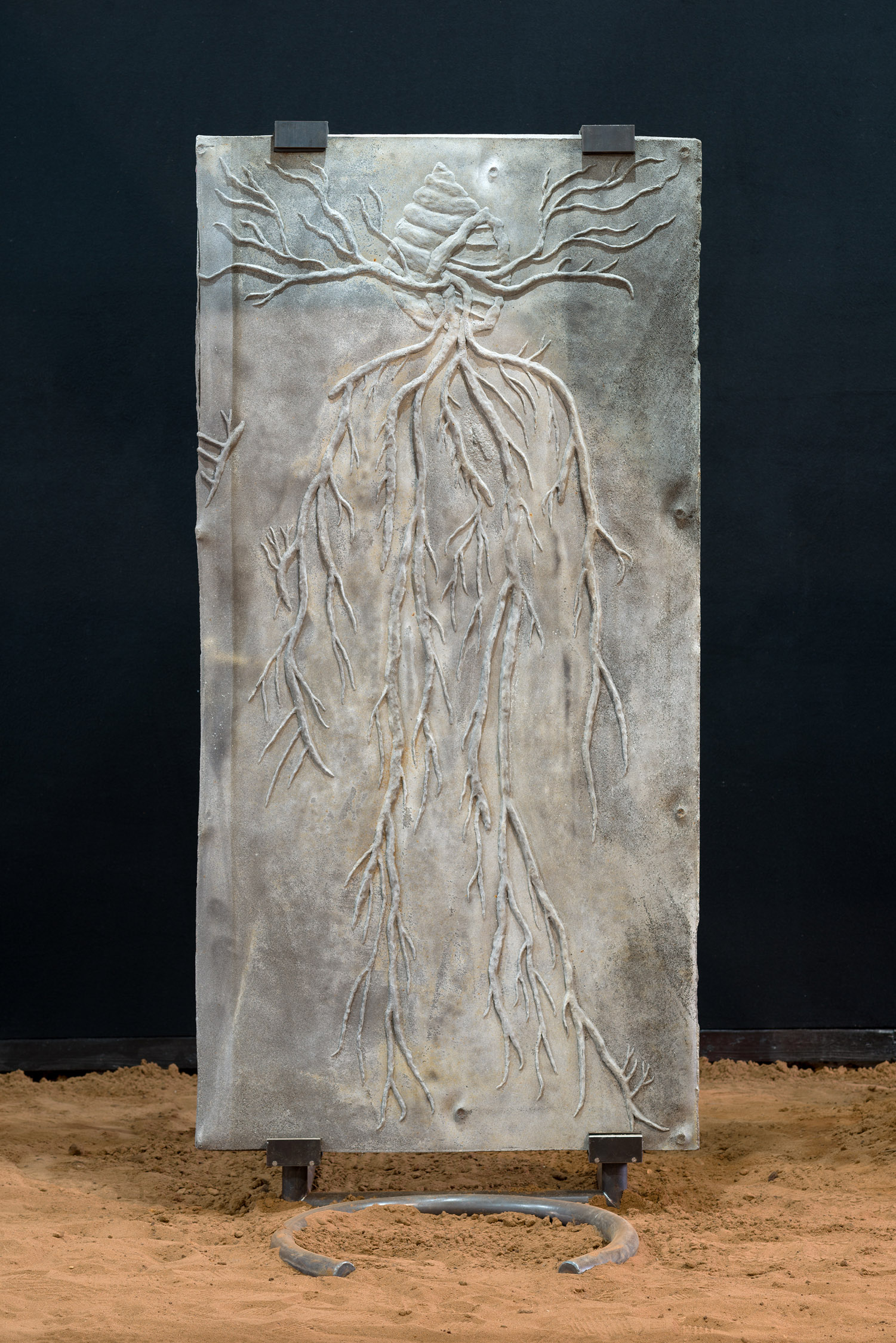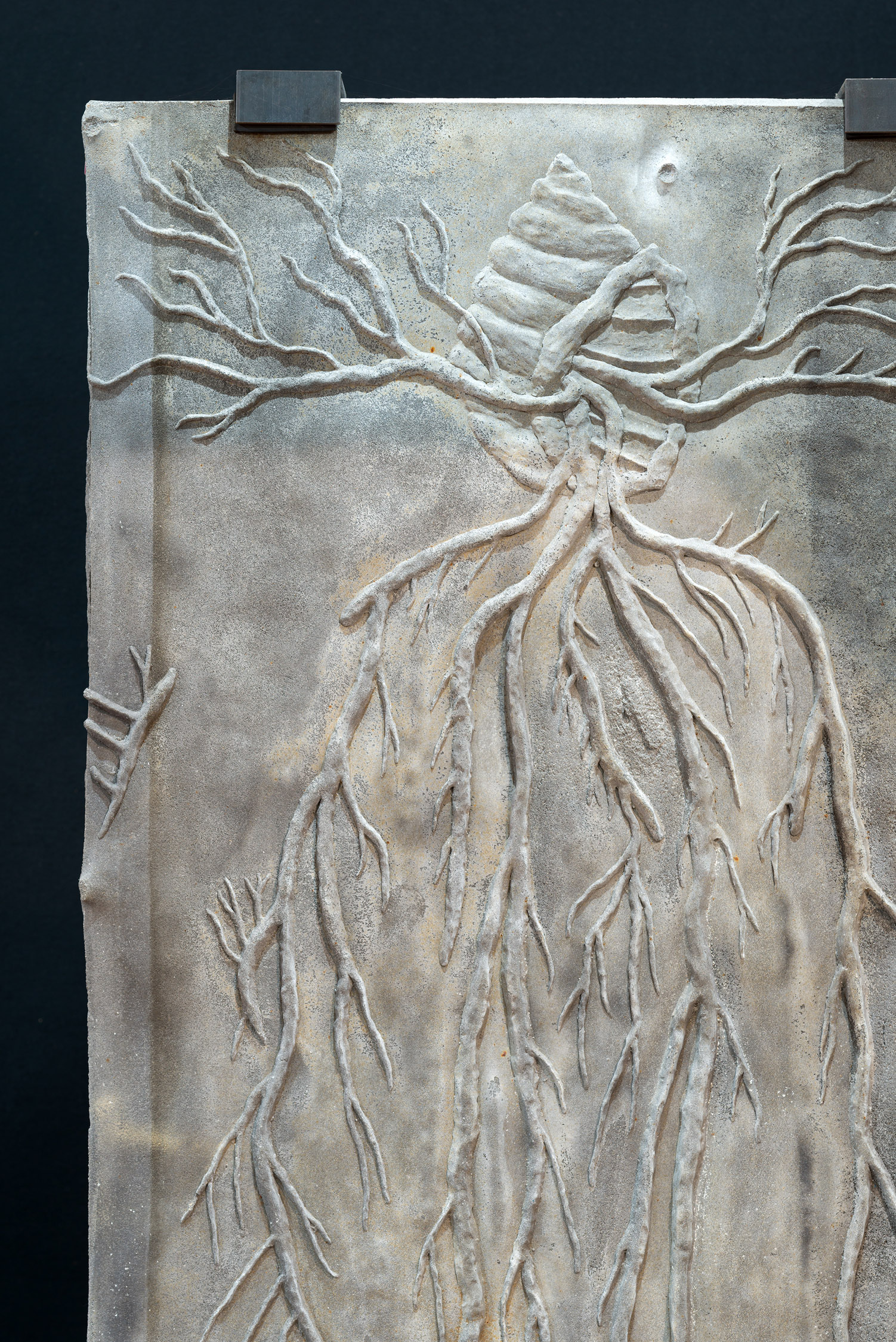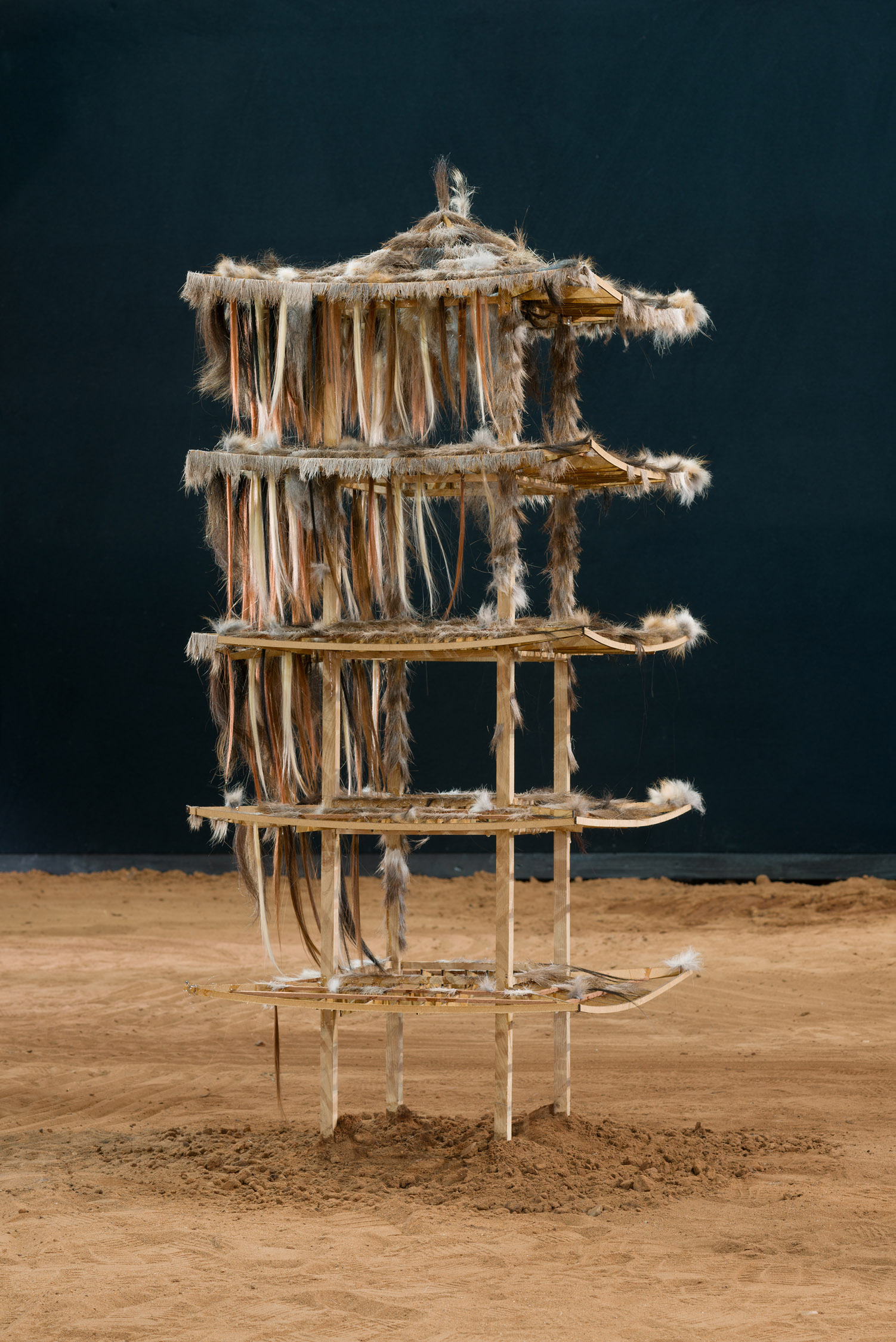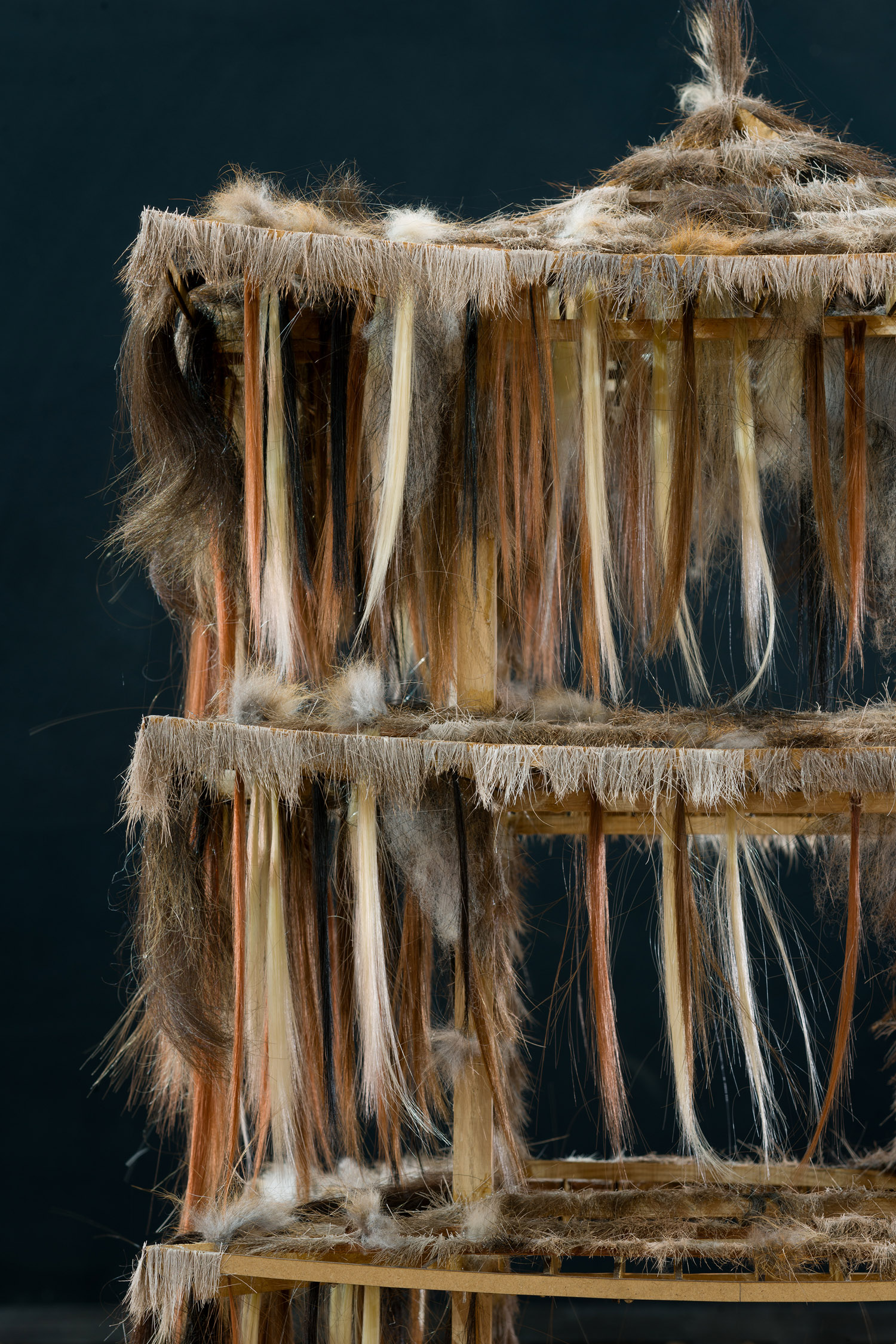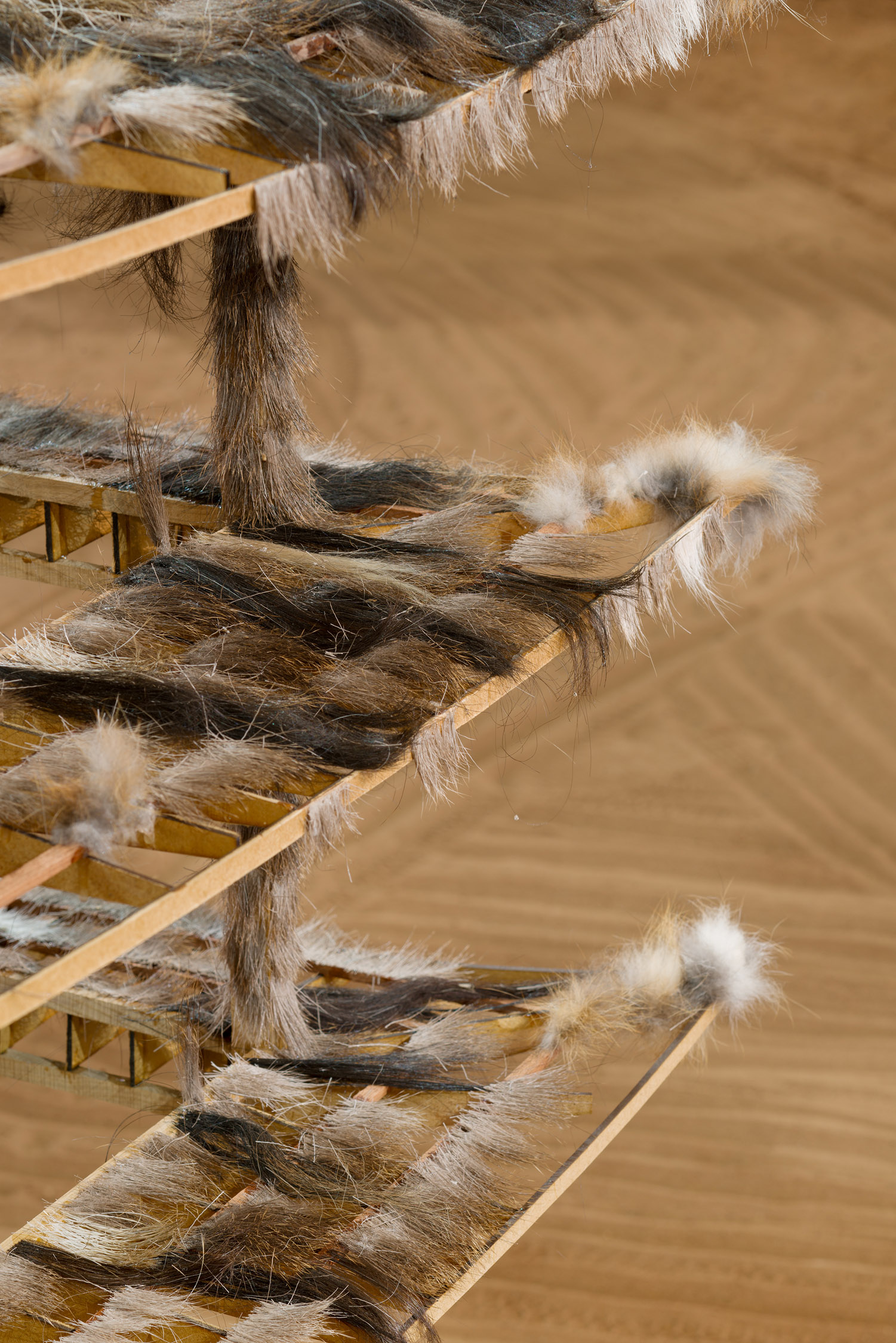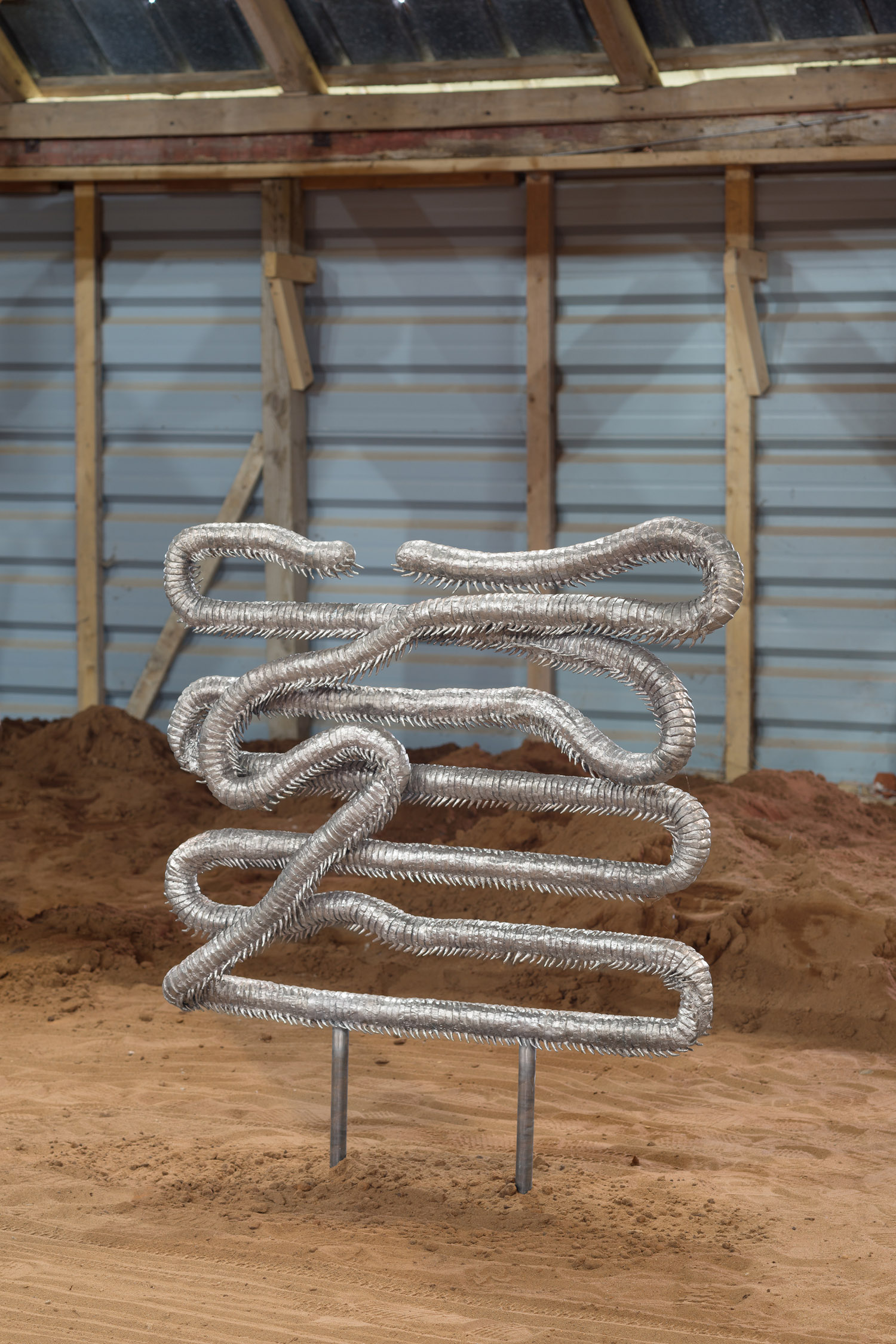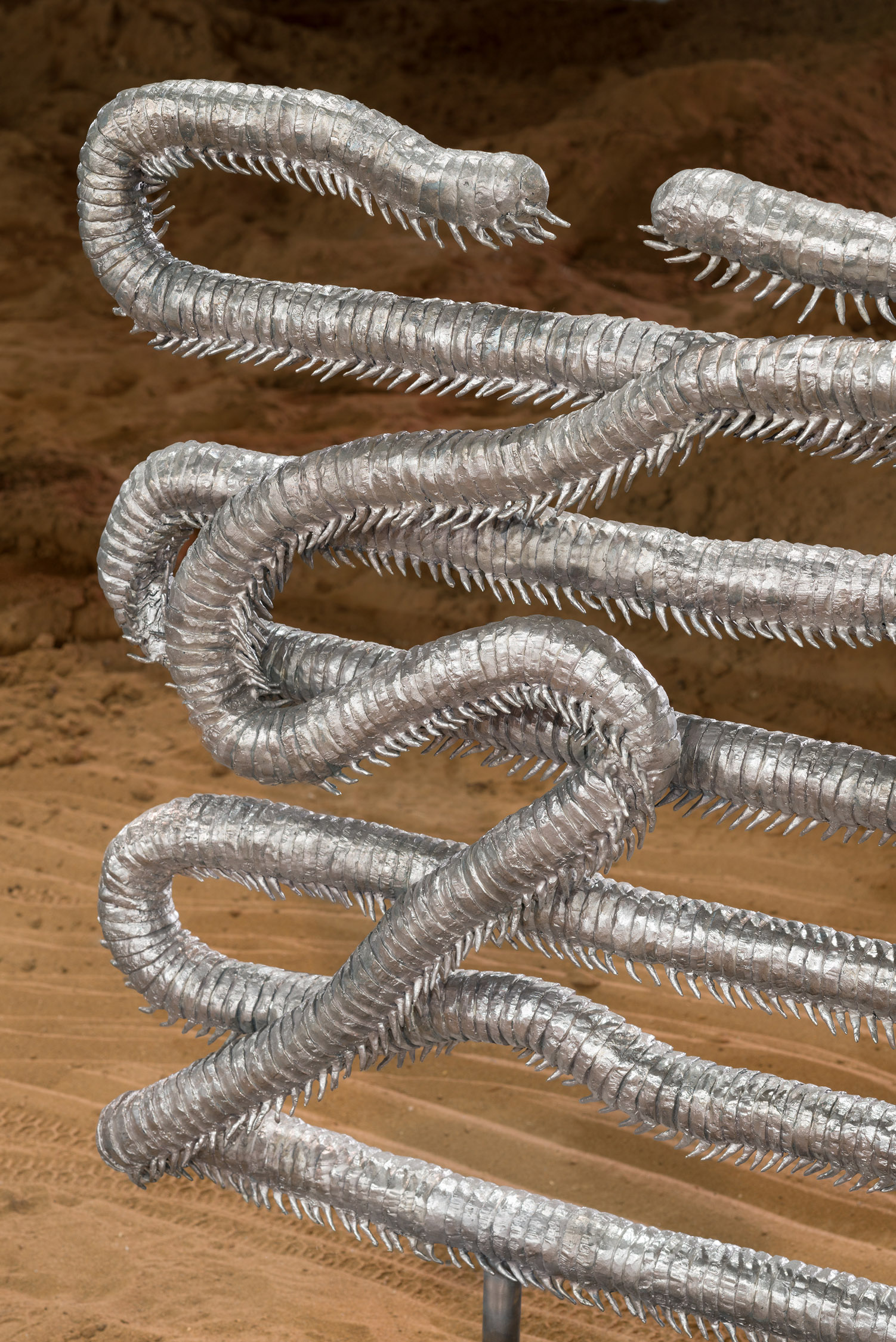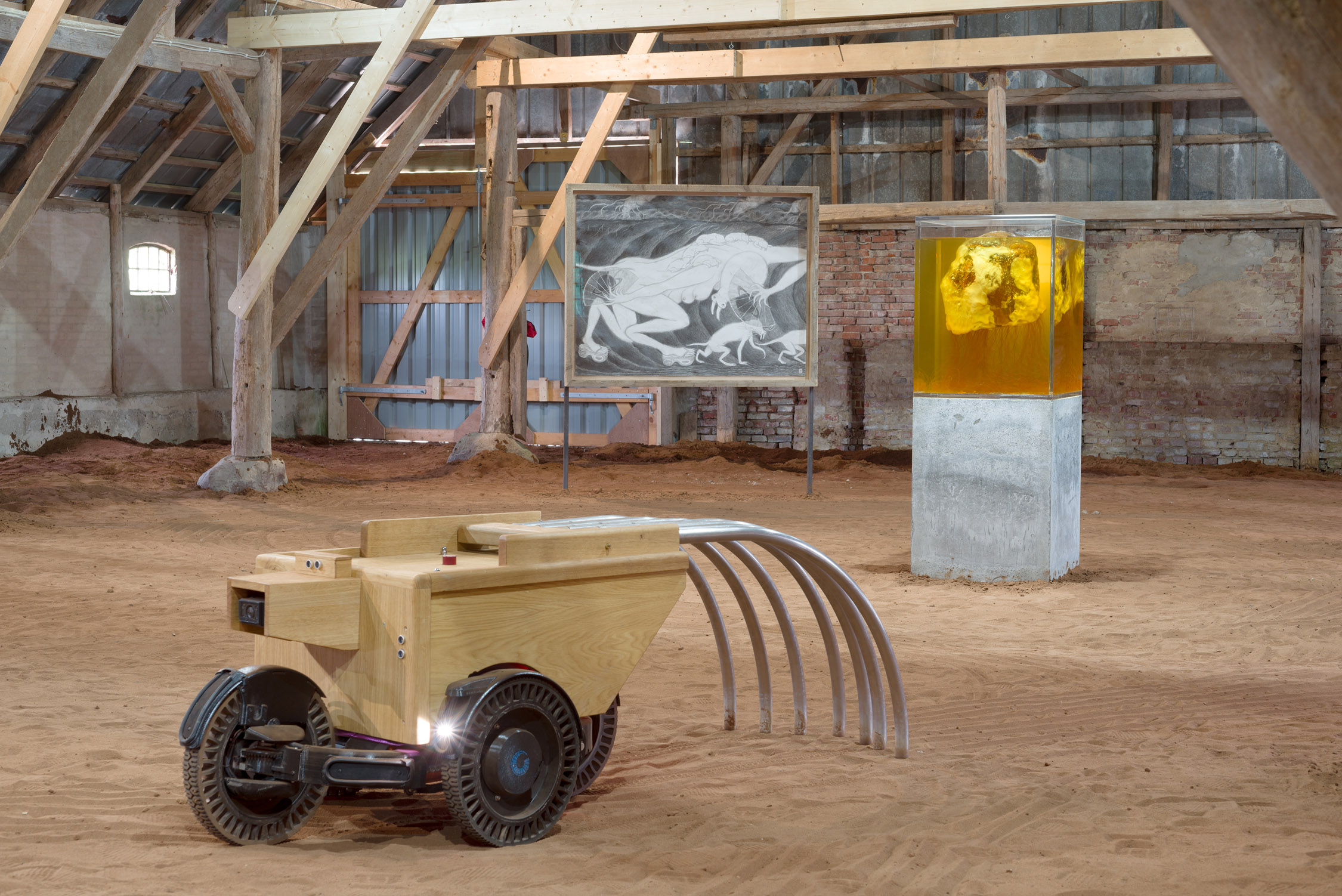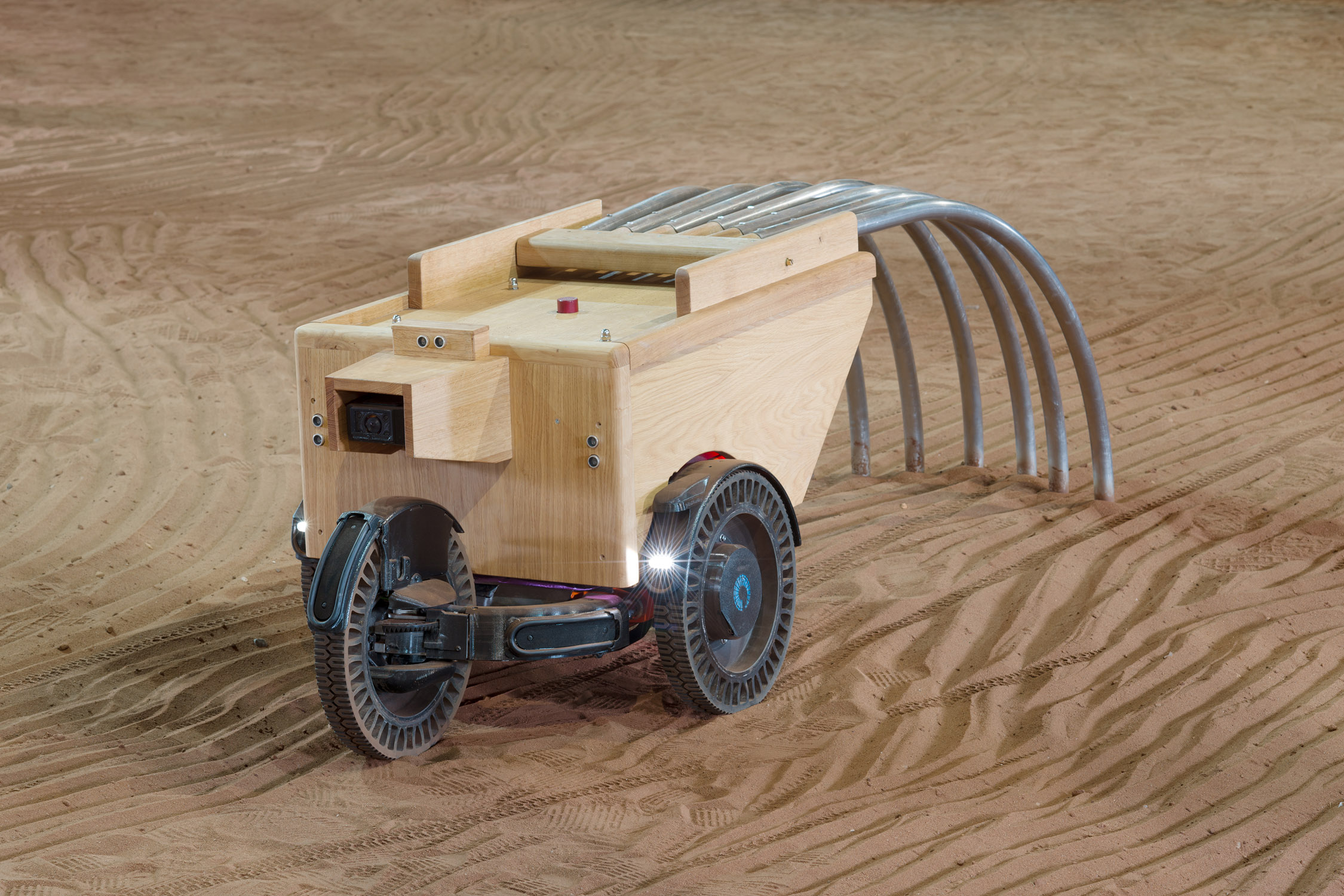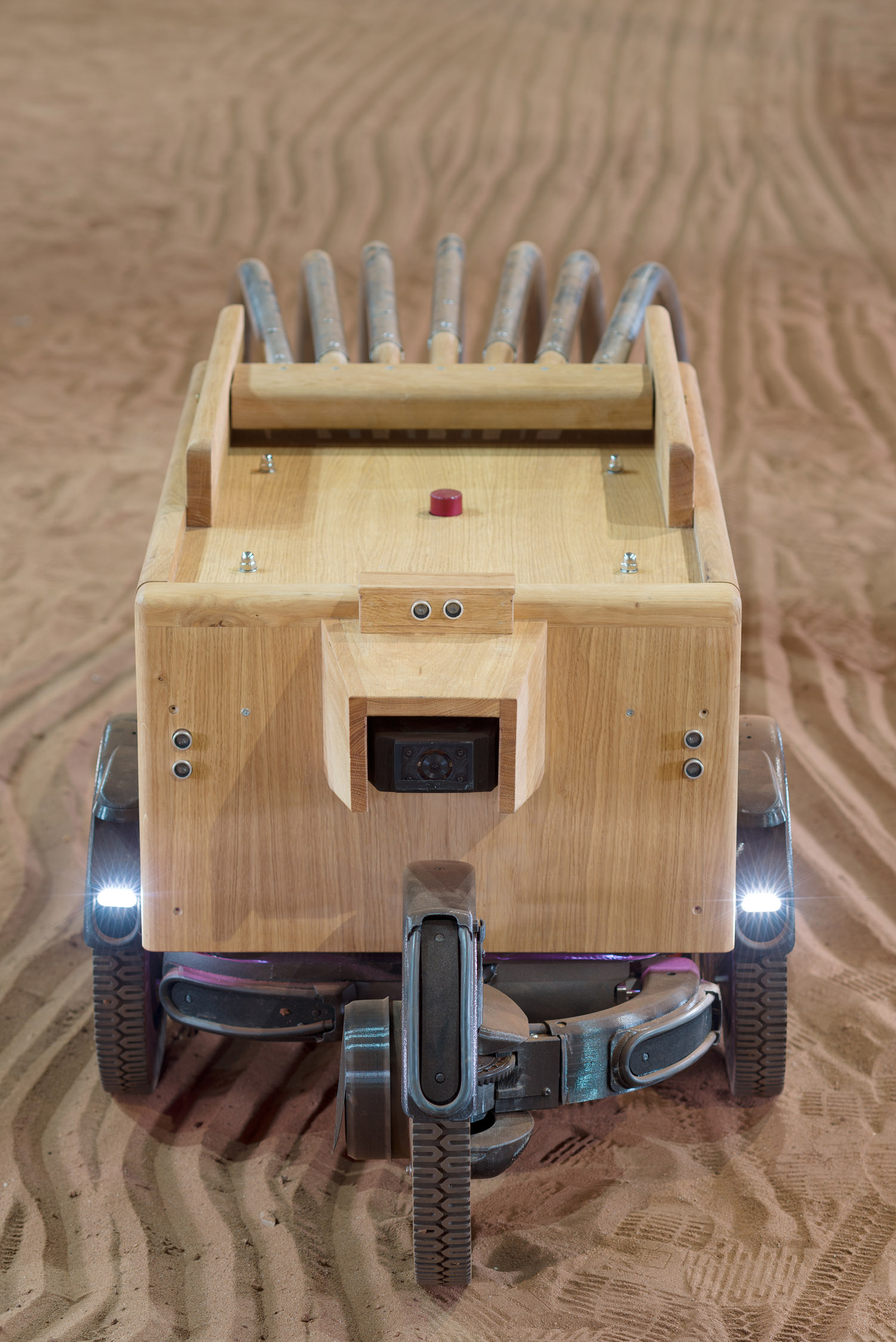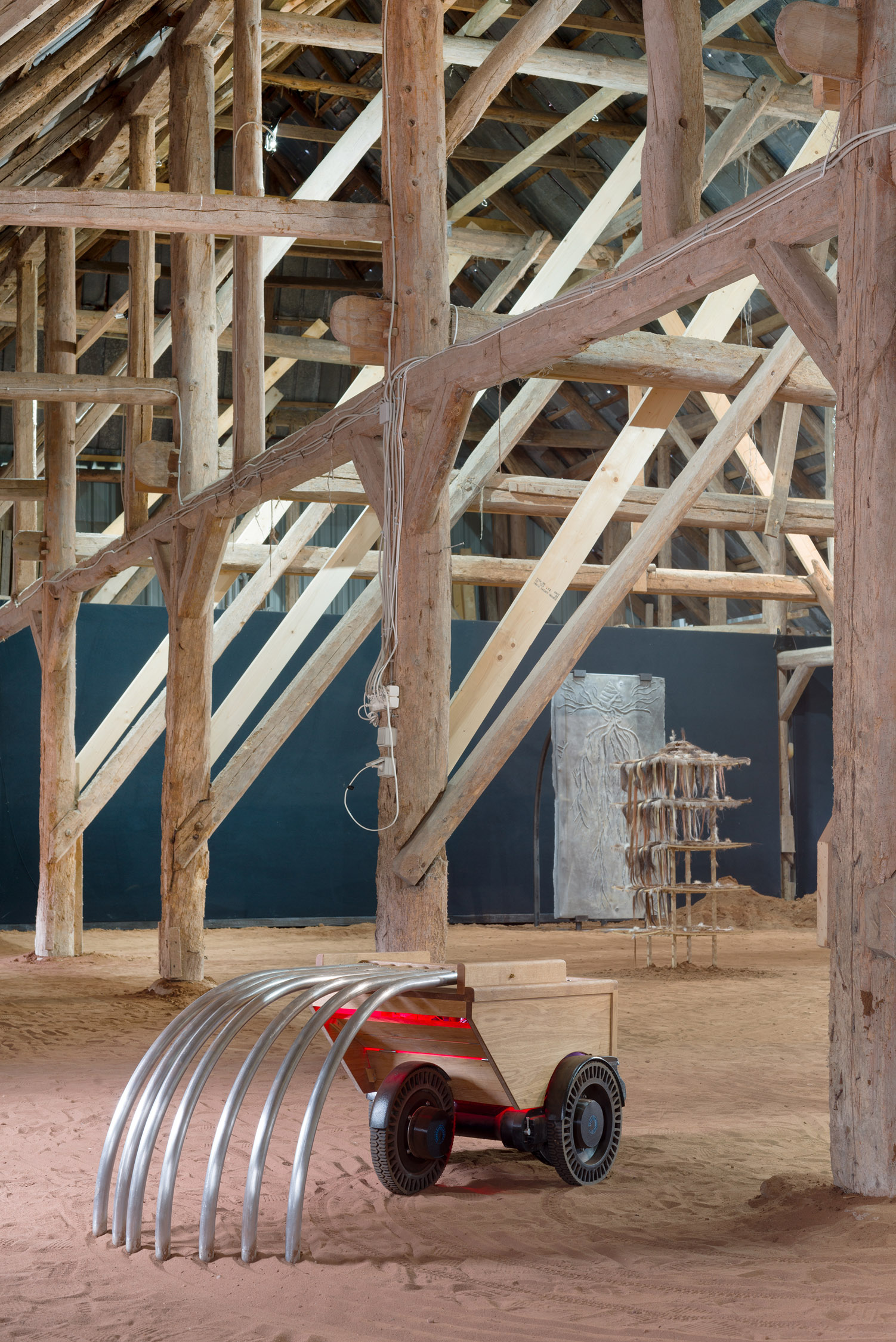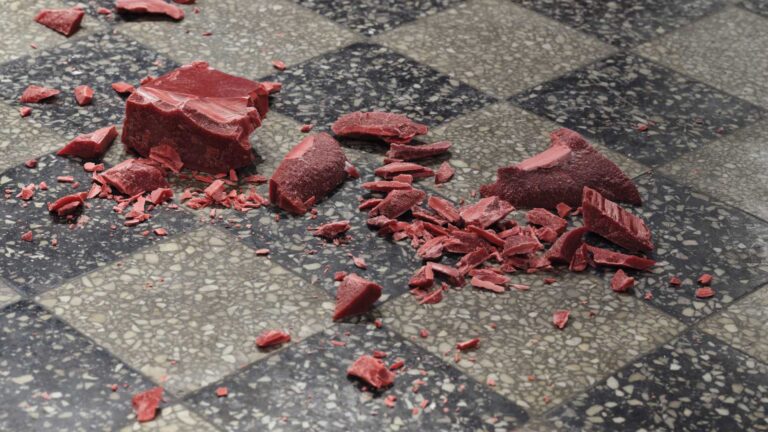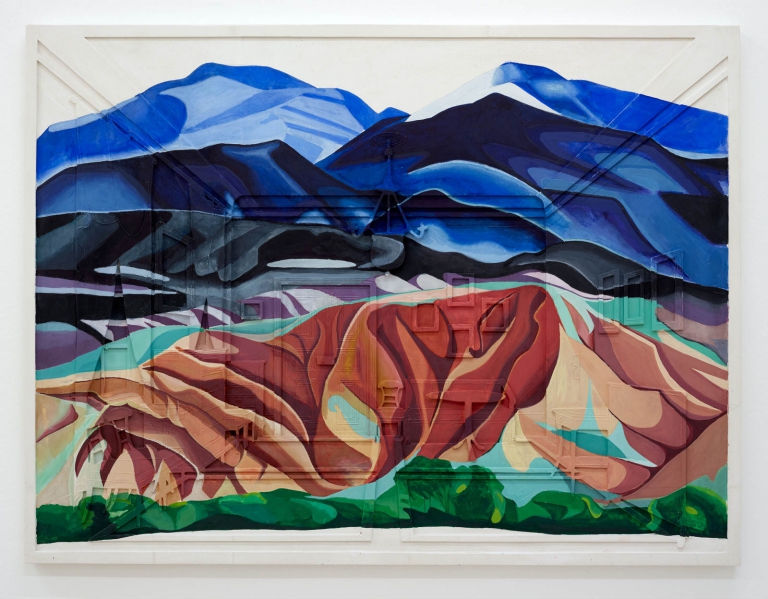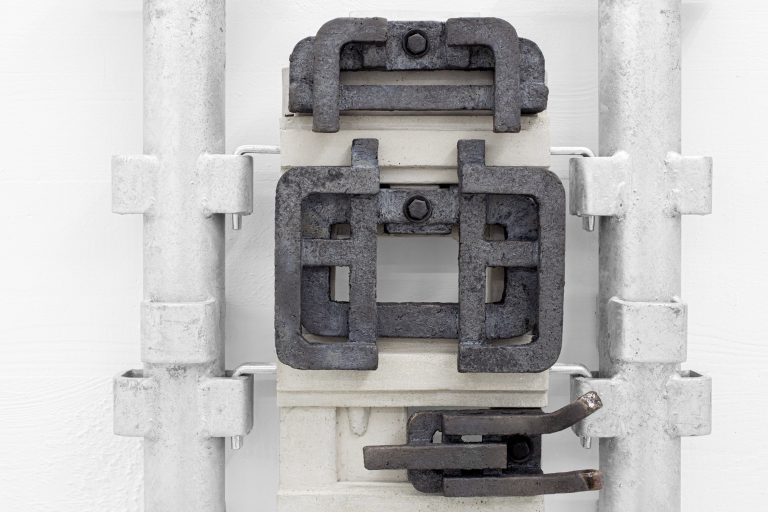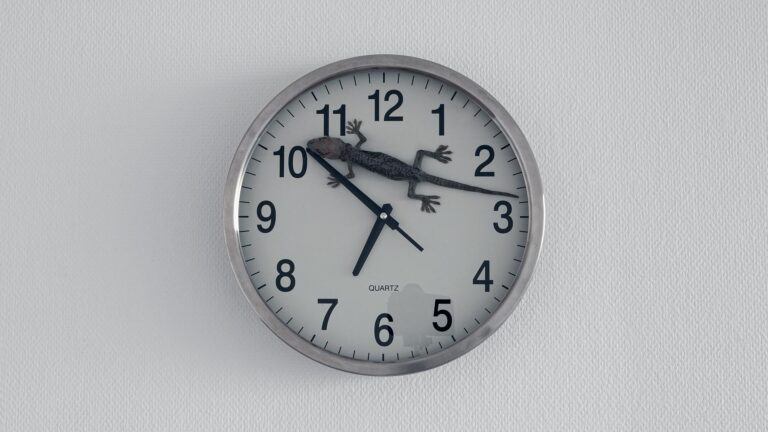Artist: Silas Inoue
Exhibition title: Zen Wakarimasen
Curated by: Rasmus Søndergaard Johannsen
Venue: Kunsthal Thy, Hurup Thy, Denmark
Date: June 9 – August 4, 2024
Photography: all images copyright and courtesy of the artist and Kunsthal Thy / Photos: ©Jacob Friis-Holm Nielsen
In early Japan, the Zen garden emerged as a minimalist type of garden inspired by the aesthetics and philosophy of Zen Buddhism. The gardens were designed to recreate specific, grand and natural landscapes using a few abstract elements such as sand, gravel, stones, and moss. The Zen garden is its own art form, developed over several centuries, and is an example of an ambiguous cultural phenomenon. In attempting to depict nature, it equally creates time images that reflect humanity’s perception of the world and itself.
With the exhibition “Zen Wakarimasen” (Japanese for “I don’t understand Zen”) at Kunsthal Thy, Silas Inoue invites discussion on how cultural codes can be mixed and misunderstood in our globalized reality. The exhibition also explores the fascinating yet unsettling developments in technology concerning nature, humanity, and a possible future on distant planets. From the traditional form of the Zen garden, a new, unexplored landscape is created, weaving threads of past and future, agriculture and space travel, craftsmanship and philosophy, and addressing contemporary challenges in both hopeful and dystopian ways.
In the work “Genepool,” Silas Inoue draws inspiration from traditional Japanese temple architecture. The characteristic roofs are covered with a mix of human and artificial hair, fur, and animal hair. Wild and bristling, they appear styled like a mullet, a hairstyle symbolizing shifting fashion at home, but also a more radical form of rebellion in the 1970s and 80s Japan, associated with teenage motorcycle gangs. The collected hair forms a contemporary gene pool, storing artificial and natural genetic information for posterity.
In a large-format drawing, Silas Inoue portrays a naked mole-rat queen. Similar to bee colonies, a naked mole-rat colony is organized around a “queen,” who is the only one capable of reproduction. Naked mole-rats are subjects of scientific study because their blood contains a protein that significantly decreases in humans after the age of twenty. This protein may be why naked mole-rats, unlike other rodents, do not get cancer and live significantly longer. The jellyfish species “Turritopsis dohrnii,” whose enlarged portrait is also seen in the Zen garden, is similarly a field of research in life-extending technologies. Unlike the naked mole-rat, it is considered directly immortal. By transforming its own body cells into polyp cores, which then create new jellyfish genetically identical to the body they originate from, the jellyfish can restart its life cycle an infinite number of times. Silas Inoue shapes this portrait from sugar and submerges it in oil, reminding us how vital nutrients and energy sources can become problematic for our bodies and shorten human life if their balance is disrupted.
The idea that life-extending measures can also shorten life is likewise the theme in the work “Conditioner.” Centipedes are found worldwide and have inhabited this planet for over 400 million years, much longer than humans. They always play an essential role in nature’s cycle, breaking down organic material and producing compost, which serves as a crucial fertilizer. Silas Inoue recreates a centipede in bronze, appearing to chase its own tail, referring not only to organic cycles but also to the shape of heating and cooling coils in modern climate control systems. These systems play an increasingly important role due to climate change. In extreme heat or cold, they make our living spaces habitable, but their wasted heat and energy consumption accelerate climate changes, which seem to be becoming inevitable.
To reduce the energy needs of new buildings, the North Carolina-based company BioMason develops biocement. They work with bacteria that naturally transform sand into hard sandstone. The concrete can be produced without burned cement, significantly reducing CO2 emissions. Silas Inoue’s work “System” consists of this biocement. The relief symbolizes the process of cooperation between humans and nature. Central to the relief is a mussel, from which a root-like nervous system grows, resembling a human in its size. It creates a connection between natural and artificial organisms, prompting us to consider a possible future without fossil fuels. The relief is held upright by a sled-like construction, again human in size, in the red earth covering the floor of Kunsthal Thys’ barn.
The foundation of the Zen garden consists of a special type of soil from Salten Forest near Silkeborg, where the iron content in the soil is higher than in other parts of Denmark, giving the earth a red color and magnetic properties. The surface of Mars is covered with a similar iron-rich red dust layer, and since it is not yet possible to collect samples of Martian dust, soil samples from Salten Forest are part of Mars research worldwide. Unlike traditional Zen gardens, which are raked by hand as a meditative practice, the red earth in the exhibition is raked by a finely hand-rolled rake carried by a robot from Aarhus-based Capra Robotics. The robot is specially designed for the exhibition and covered with oak wood by the Alba carpentry workshop. Just as the exploratory rovers that have been driving around Mars for years collecting data on the planet’s surface, the robot moves through the red sand while the rake covers the tracks it leaves. However, the way the robot rakes also makes the entire installation resemble a plowed field in outer space. The route in which the robot takes through the art hall is pre-programmed by students from the Technical University of Denmark and follows its own algorithm, which can only be interrupted by the visitors it moves to avoid. The realization of “Rover” and its paths through the sand would not have been possible without the collaboration of these innovative partners.
Both as a whole and through its various works, “Zen Wakarimasen” invites discussion across cultures, generations, and geographical affiliations. The exhibition moves in a tension between future dystopia and technological optimism; on one hand, it celebrates modesty and coexistence with nature, which is the traditional basis for the Zen garden, while on the other hand, it reveals an ingrained human restlessness and an unrestrained pursuit of infinite life, infinite resources, and infinite growth. Inoue’s exhibition attempts to shift us away from contemporary political focus on division and create a basis for a more ambiguous understanding of issues as intertwined, intricate, and chain-forming situations. However, in its curiosity about the study and development of robots and sustainable materials, the exhibition also points towards hopeful technological initiatives and improved living conditions on Earth rather than a possible colonization of space.
The Danish-Japanese artist Silas Inoue lives and works in Copenhagen. In 2022, he was part of the residency program at the International Studio & Curatorial Program in New York City, and in 2018, he spent three months as a resident at the 18th Street Arts Center in Los Angeles. He has exhibited at Horsens Art Museum, Augustiana Art Hall, Ulterior Gallery in New York City, CAPC Museum of Contemporary Art in Bordeaux, and Art Sonje Center in Seoul. His works are also represented in the collections of Horsens Art Museum, Bornholm Art Museum, Sorø Art Museum, and the Danish Arts Foundation.

